HMS Queen Elizabeth has left the port of Gibraltar after her maiden overseas stop, she will now conduct further helicopter trials.
She was escorted by HMS Scimitar and HMS Sabre from Gibraltar Squadron and also the Gibraltar Defence Police and Royal Gibraltar Police. Defence Secretary Gavin Williamson said the visit was a milestone for the vessel:
“I’m sure our friends in Gibraltar will be proud to see our future flagship sail through British waters into their famous port.”
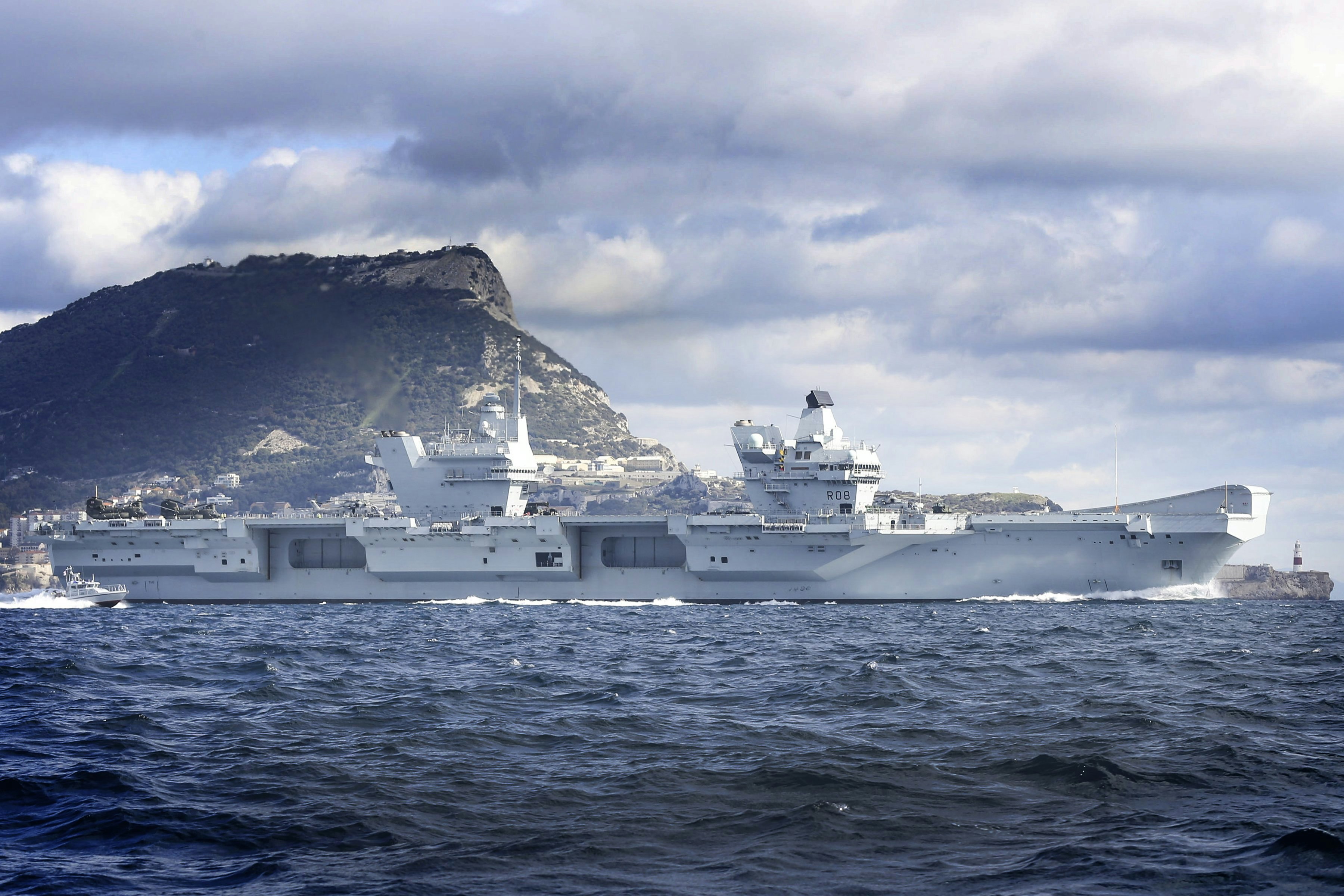
The aircraft carrier will now continue helicopter clearance trials with Merlin and Chinook helicopters for the next few weeks in the Eastern Atlantic and is currently accompanied by HMS Somerset.
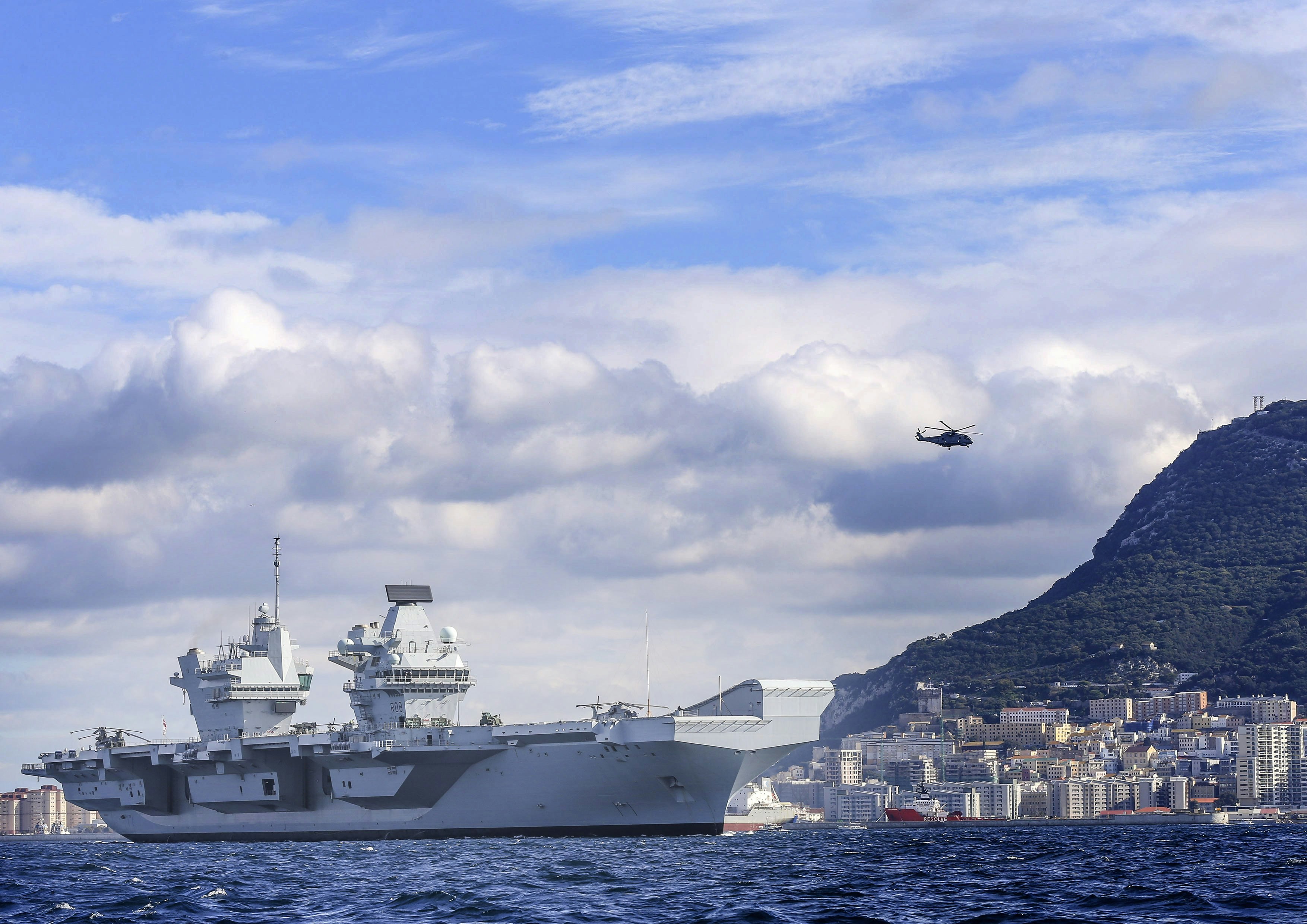
In order to prepare for operating from HMS Queen Elizabeth, Royal Navy sailors have also trained alongside their US Navy counterparts on the flight deck of the amphibious assault ship USS Wasp. Last year, the Royal Navy sent six Sailors to integrate into Wasp’s flight deck operations to prepare them for their upcoming Queen Elizabeth class aircraft carriers.
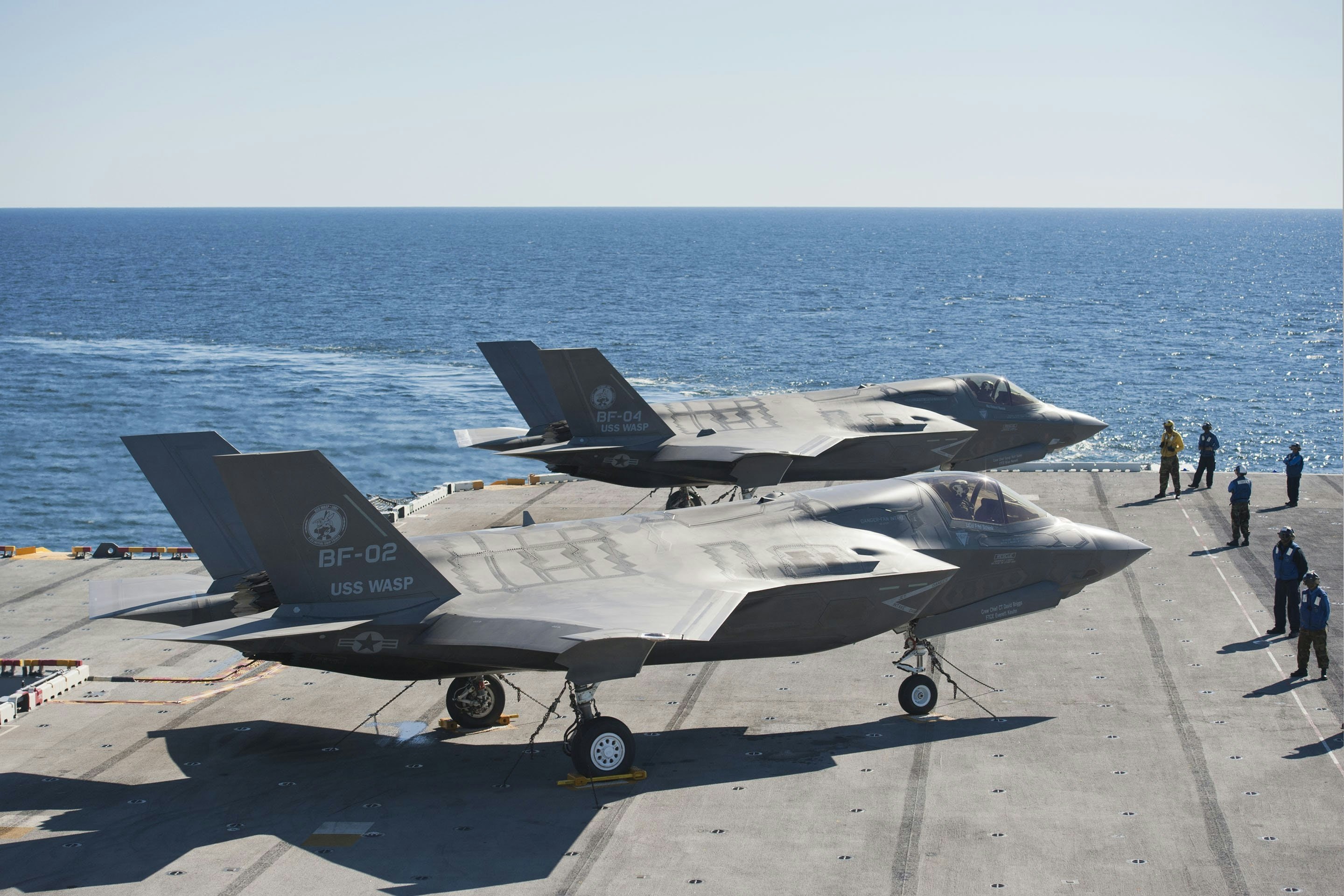
Royal Navy sailor Richard Clark said:
“Living with one another is good for integration, so when we work together, when we have your aircraft come to our flight decks, and vice versa, we’ll have a bit more awareness of how we each operate. It helps us work with you better on different platforms when we need to. This is the first group of guys who are not 1st Classes. Some of them have never been on a ship before, so for the younger guys, it’s good for them to get experience.”
Recent F-35 trials aboard the USS Wasp weren’t just an operational test for the United States Marine Corps, with much of the data produced being used to inform the USMC’s declaration of initial operating capability but also for the United Kingdom. UK personnel were fully embedded in the USS Wasp trials and will use the data gathered from this event, future trials and operational deployments to support the UK’s flying trials aboard HMS Queen Elizabeth off the US coast in Spring next year.
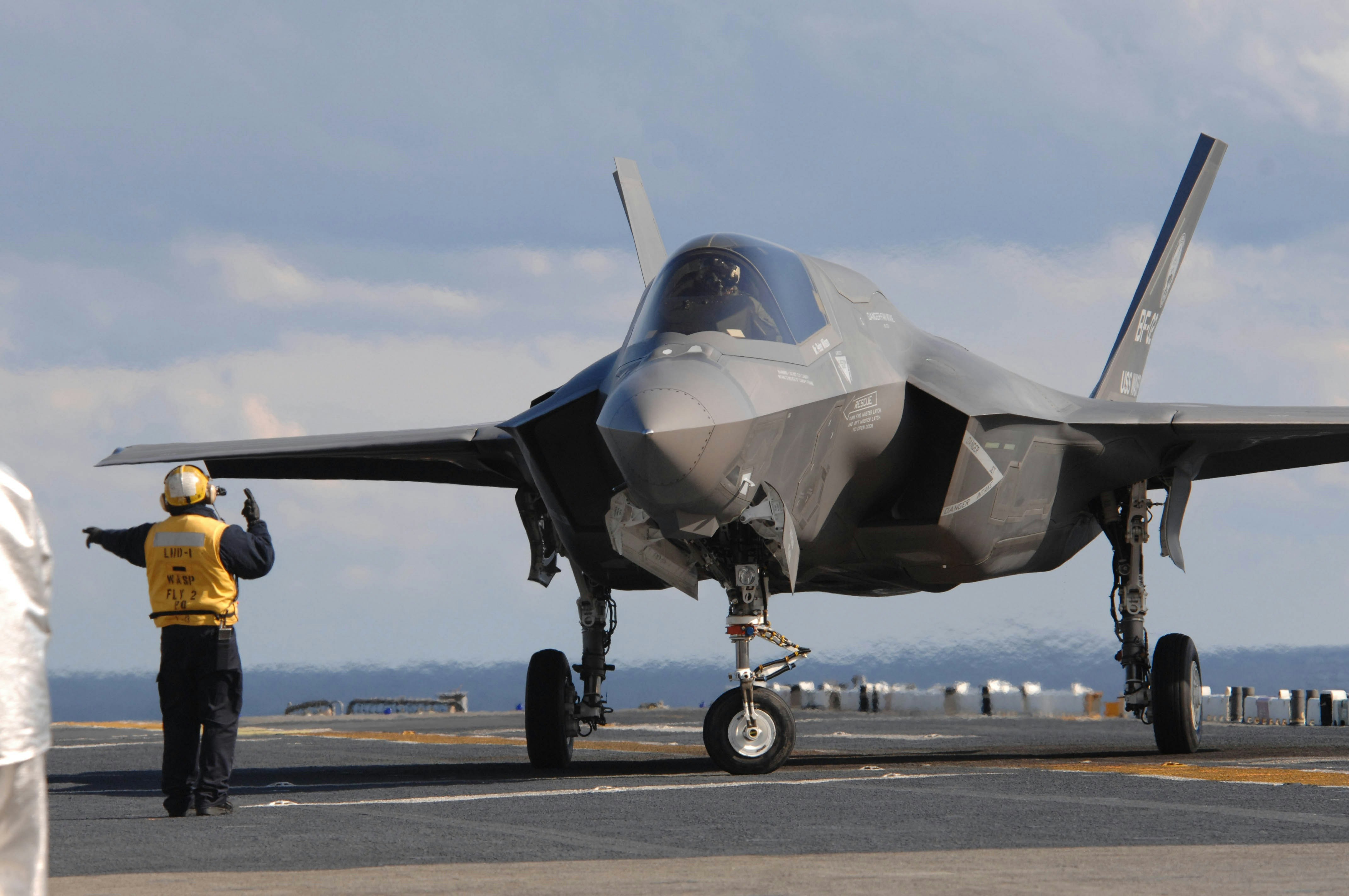
British F-35 pilots also recently embarked on the USS America for at-sea developmental testing phase 3 (known as DT), the last trial that paves the way for the US Marine Corps to deploy the jet operationally on amphibious assault ships. BAE Systems test pilot Pete Wilson said about the upcoming trials on the HMS Queen Elizabeth:
“This will not be a DT phase. Testing on the Queen Elizabeth will be like DTs 1, 2 and 3 combined. We don’t need to use fully instrumented aircraft; we already understand most of the loads on the aircraft systems, as we have tested that during earlier tests.”
HMS Prince of Wales will take over F-35 trials to allow HMS Queen Elizabeth to return to dock for her routine re-certification work.
Former Captain of the vessel Ian Groom told media that HMS Prince of Wales will need to be delivered during 2019 to allow flight trails to continue whilst Queen Elizabeth is undergoing inspection in dry dock. Quoted in Janes, Groom said:
“There is a further set of fixed-wing flying trials needed and HMS Prince of Wales has to carry them out. HMS Queen Elizabeth’s re-certification period in 2019 means we need HMS Prince of Wales then.”
What will the vessels carry when in operational service?
The term now used for the carriers embarked squadrons is ‘Carrier Air Wing’ (CVW). The vessels are capable of deploying a variety of aircraft in large numbers, up to a maximum in the upper fifties in surge conditions. Captain Jerry Kyd, commander of HMS Queen Elizabeth, commented on the initial deployment and the gradual increase in air wing numbers:
“We are constrained by the F-35 buy rate even though that was accelerated in SDSR in 2015, so initial operating capability numbers in 2020 are going to be very modest indeed. We will flesh it out with helicopters, and a lot depends on how many USMC F-35s come on our first deployment in 2021. But by 2023, we are committed to 24 UK jets onboard, and after that it’s too far away to say.”
In 2023, the UK will have 42 F-35 aircraft, with 24 being front-line fighters and the remaining 18 will be used for training (at least 5 on the OCU), be in reserve or in maintenance.
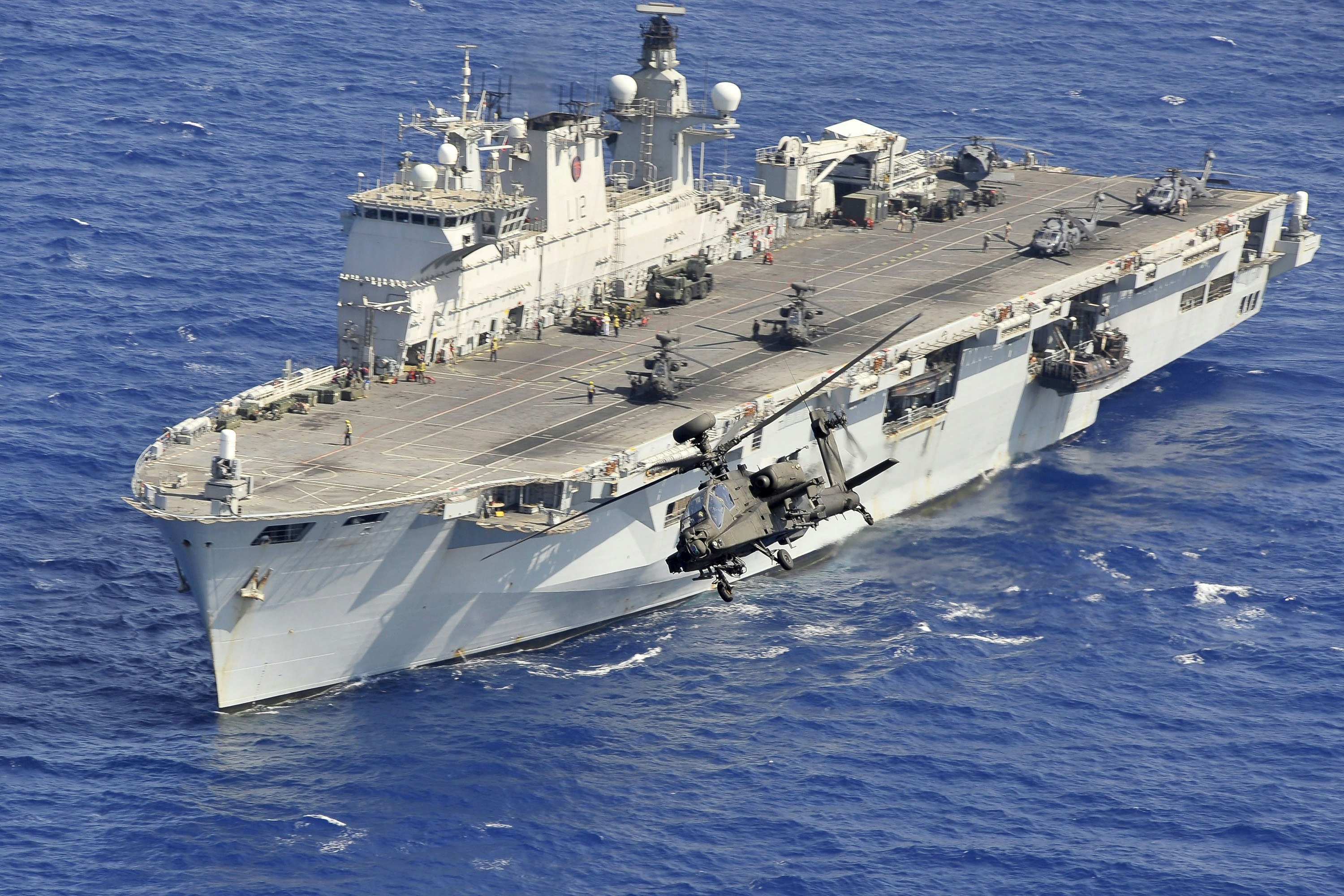
In addition to the joint force of Royal Air Force and Royal Navy F-35Bs and their pilots, the air wing is expected to be composed of a ‘Maritime Force Protection’ package of nine anti-submarine Merlin HM2 and four or five Merlin for airborne early warning; alternatively a ‘Littoral Manoeuvre’ package could include a mix of RAF Chinooks, Army Apaches, Merlin HC4 and Wildcat HM2.
The Crowsnest AEW&C aircraft will come from a number of the embarked Merlins (any of which can be fitted with the sensor package), the number again scaling with requirements.
We understand that vessel would still carry at least one F-35 squadron aboard in such circumstances to offer air defence as well as support to the helicopter assault activities.
A source we spoke to, currently flying the jet, explained to us that the vessels will deploy with the number and type of aircraft required for a specific deployments:
“Where F-35B is based is entirely down to the most suitable basing option for the tasks/missions is being sent to do. If that’s a well-founded host nation base, great; if it’s the Carrier, great; if it’s an austere location, fine. Range, logistics and other ‘enablers’ such as AAR and connectivity will determine what’s the best option.”



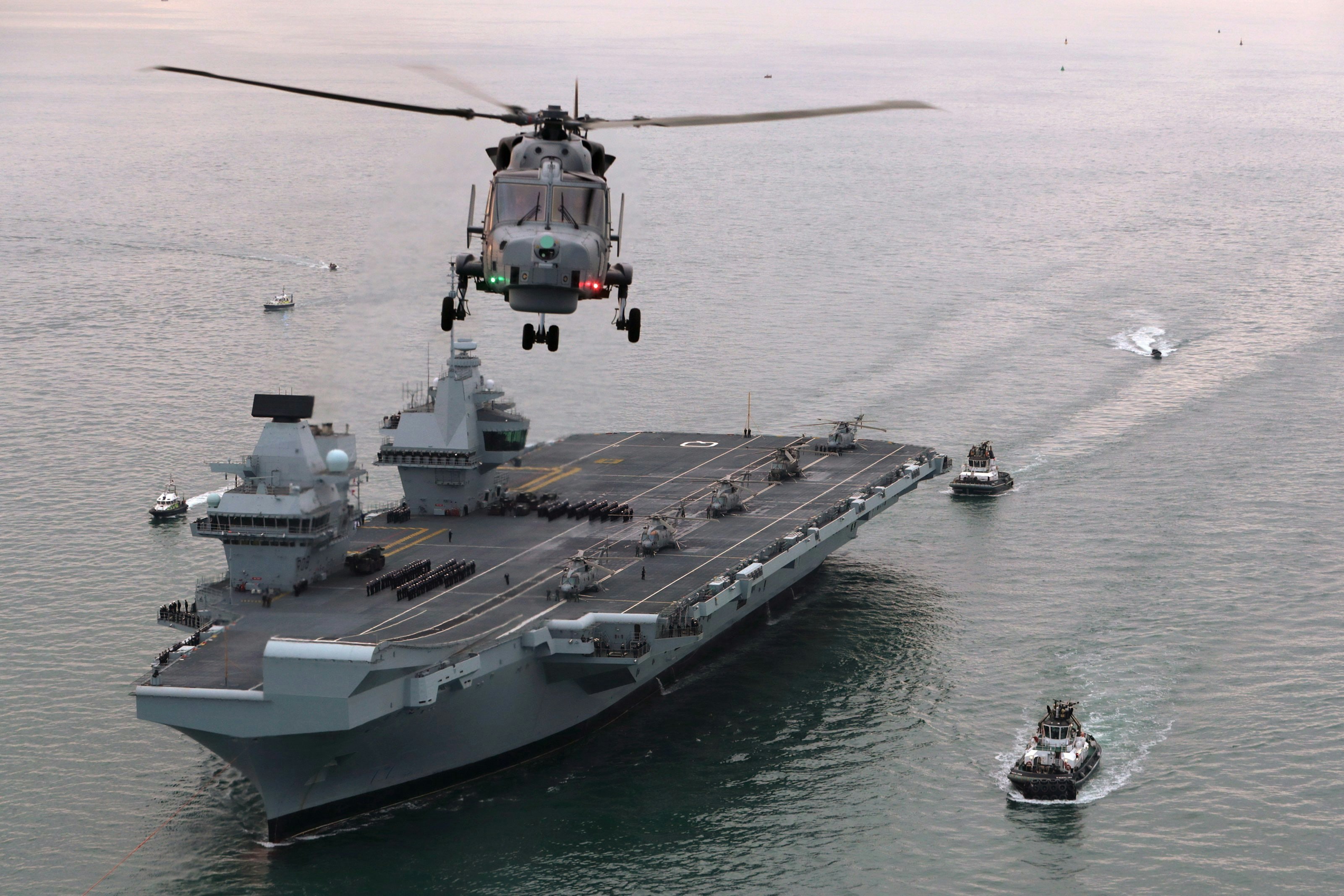
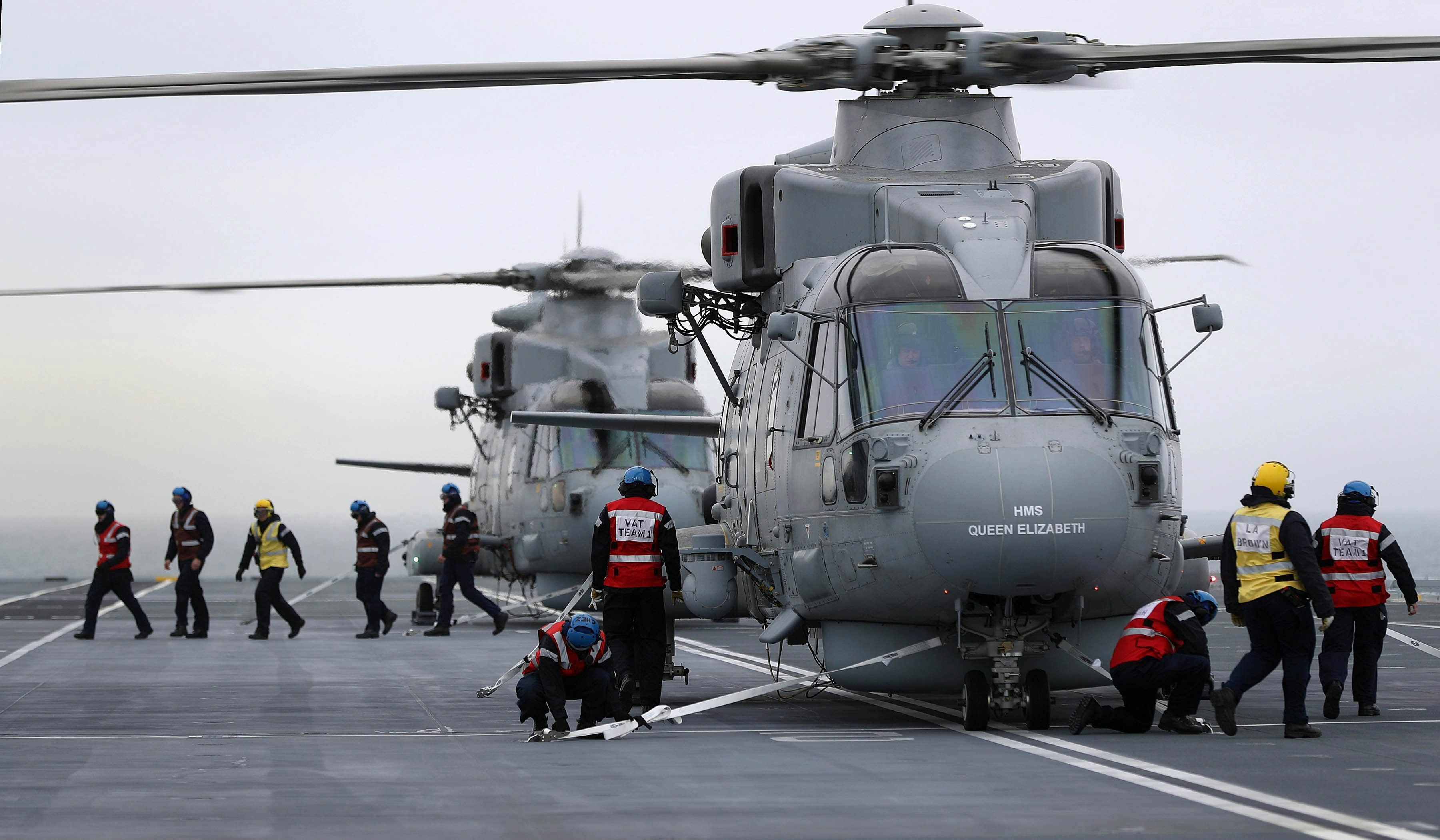











Cracking photo at the top.
Regards Crowsnest, the Sea king variant is to go out of service this year and its Merlin replacement won’t be ready for 18 months.But here’s the catch, no new Merlins will be procured for the Job, rather they (the crowsnest variant) will be taken out of the 30 Merlins on the RNs books.
I thought there was more than five Merlin Mk1’s in storage?
http://www.demobbed.org.uk/aircraft.php?type=404#
There’s about 6 of them sitting in boscomb in mothballs anyways
Yes all well known.
30 Merlin amongst 3 Squadrons plus OCU plus 849 NAS in the ASCS role and reserves, maintenance airframes etc as usual spread faaaar too thin.
Don’t forget there’s also the 25 Merlin acquired from the RAF. Though naturally, these fulfill a different role.
The Crowsnest variant should have come from new airframes, or if possible, the HM1’s that were not upgraded – if at all possible.
Those are SH Merlin Lusty not the rather special ASW Merlin HM2 variants.
They are replacing the 30 plus Sea King HC4 of the Commando Helicopter Force in 845 and 856 NAS.
As usual, rather than buying new they robbed Peter to pay Paul and took them from the RAF, compensating them with 14 Chinooks.
But as the RAF like the other services is stretched manpower wise they could not stand up an additional front line squadron in a 60 odd fleet, just a joint Chinook Puma OCU at Benson.
So again a loss in numbers.
Agree with you Crowsnest should have been dedicated airframes from the HM1’s.
I am aware of that, was just pointing out that the SH were on the inventory as well. Either way, with helicopters not being replaced like for like, and a cut in the Chinook order, we are seeing numbers drop. You’d have thought the Falklands would act as a lesson in the power, and flexibility of helicopters.
Agree, that photo is amazing.
Does look a little Photoshopped but not complaining.
Think there’s still some Merlins in hibernation somewhere, not heard anything about them recently.
I’m glad that you like the Photo, I took it yesterday. The only Photoshop used was brightness and contrast, I haven’t even removed the water-drop on the lens just under the ship. I was at 50mm of my 24-70mm lens. We didn’t hang around long as she was heading towards us at some speed.
They were the 8 HM1’s not updated.
No idea if still possible to use or if already cannibilised.
Crowsnest is a mission fit item. It doesnt need a specific dedicated Merlin air frame. If the Merlins that have been modded to receive it are not required for AEW they revert back to there normal role.
So If all the Merlins in the fleet got the mod then there would be 30 AEW capable air frames. Its a lot more flexible doing it this way.
And all the ships including the OPVs get a Merlin capable deck.
As a the moniker suggests its gunnery time so from the pictures I can spot the following
Poor Jack or Jenny stood Stbd fwd manning the mini gun…and a compatriot on a GPMG on Port fwd also a couple of guns aft on the stern.
Looks like the CIWS will be located as follows
1. Stbd fwd below the flight deck Fwd of the island …you can see the square mounting base waiting there for it .
2. Port aft 2 decks down from the flight deck on the stern
3. Stbd aft…I cannot see a base from these pictures but the ships structure looks like its made for a CIWS…the drop-able safety nets are the big give away… putting it there gives hemispherical coverage for the CIWS.
FLIR Laser range finders are port side of the fwd bridge roof with another on the stbd aft side of the aft island.
Looks like the 30mm it will be as follows…You can make out the circular bases on the deck
1. Stbd fwd below the bridge and flight deck (ahead of the phalanx).
2. Port fwd on a sponson.
3. Port Aft 30mm looks like it will be fwd of the phalanx and one deck up from it.
4. I am guessing a 30mm will be in and around the aft stbd phalanx area as it is on port aft.
Great info Gunbuster thank you.
Thanks for the info Gunbuster. I wouldn’t like to be in your crosshairs, you have a very sharp pair of eyes!
Forgive my repeating my mantra that if the MoD think more helicopter assets are needed we should not be buying Chinooks but numerically more Merlins. We MUST spend the money (whatever the Chinooks would cost) here in the UK, not in the USA again, and provide a far more flexible and, as far as internal loading is concerned, a more capable fleet. We already have a big unit load / external lift capability as we have more Chinooks than Merlins so we do not need more.